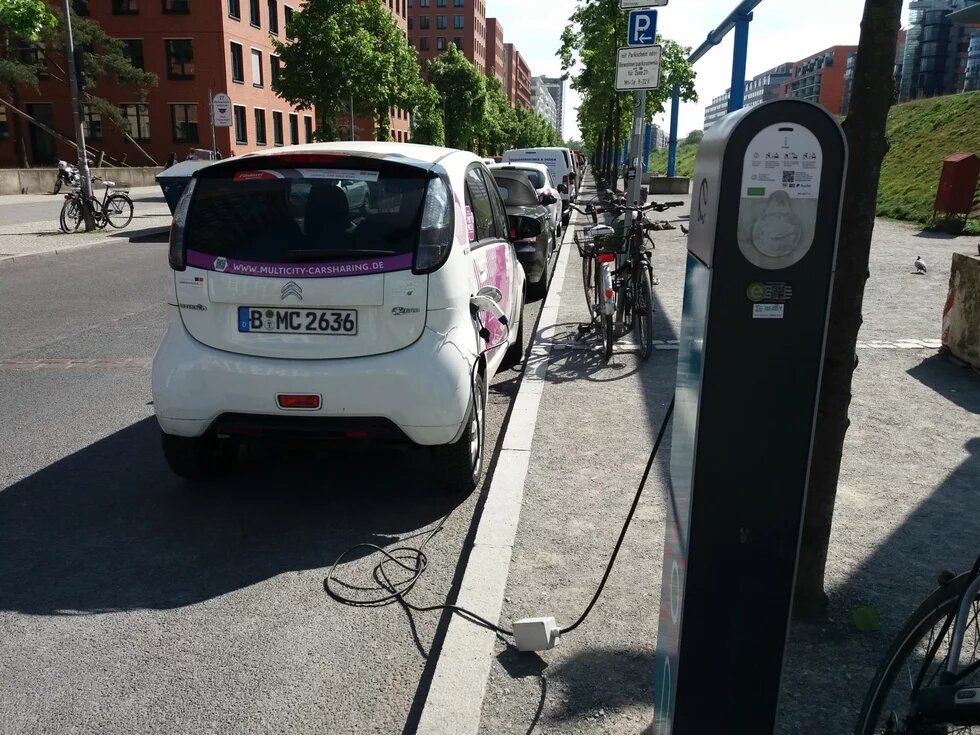
This article focuses on the sustainable urban mobility, which is one of the eight Green Deal goals.

The European Green Deal is the response of the European Union to the climate and environmental-related challenges that are the defining task of our generation. Each country will equally participate in the Green Deal with all the benefits and obligations that this entails. In order to be able to get the most out of all the significant resources that will be available for over a decade, we need to be properly prepared. The national and regional plan on energy and environment should be redesigned and the individual programmes required under the environmental legislation should be identified in an effort to estimate the new investment needs.
The European Green Deal will provide specialised support to public administrations and project promoters in identifying, structuring and executing sustainable projects that will arise from the strategy formulation and the definition of investment needs. The cooperation with all the Funds (InvestEU -as guarantee-, Just Transition Mechanism, Innovation Fund and Modernisation Fund) and the European Bank along with the obligation of using both private capitals and public budget makes it a unique opportunity for Greece. For that reason, cooperation, support and coordination of all available resources and of the current workforce are needed, without leaving anyone behind.
We should try to seize this opportunity for new jobs and economic growth through strategic investments. For that, a new and coordinated governance at all levels and a proper analysis of the relevant needs based on new and correct data are necessary. The priority of the proposals will be determined by the level of their energy efficiency and sustainability control.
Sustainable mobility is one of the 8 Green Deal goals. For transport free from air pollutants and fossil fuel use, the first requirement is to review and update the Sustainable Urban Mobility Plans (SUMP) with appropriate legislation in order to:
- drastically reduce the transport emissions,
- accelerate the access to sustainable and smart mobility,
- make the final steps towards the production and widespread use of alternative fuels.
Desired practical results
- Increase of renewable energy sources production, with provision for their storage, distribution and availability throughout the country.
- Wide development, distribution and disposal of these sources, by funding appropriate alternative fuel infrastructure (refuelling stations for biofuels, green hydrogen and recharging stations for electric propulsion).
- Emission reduction throughout the transport system, whether for goods or passengers.
- Energy efficiency and smart technologies in different procedures, in buildings related to mobility, in logistics and in the connection of different transport modes (road, rail and waterborne) as well as acceleration of the transition from polluting modes (road transport) to cleaner alternatives (rail or waterborne transport).
- Reduced emissions in the cities, green urban mobility, improvement of the connection of cities with ports and airports.
Legislation and measures that will be redefined must take into account the special characteristics of the regions regarding their different climatic, geographical, economic and social conditions from north to south and especially of the islands.
Having participated in Energy Plans in regional level, as an obligation deriving by signing the Covenant of Mayors (CoM) and knowing that many cities and regions have designed Sustainable Urban Mobility Plans to participate in Horizon 2020 funding mobility programmes (until today), we should consider this serious effort made by cities and regions when designing national strategies on energy, environment, sustainable and smart mobility.
We do not start from scratch, many regions and cities have developed important initiatives despite the centralised system of Greece and we should make appropriate use of the best practices among the ones developed in these pioneering cities or regions. Rethimno (CIVITAS Destinations), Karditsa, Maroussi, Tilos, Kythnos, the Aegean (in the energy sector), Thessaloniki (green port) are only a few examples.
What is more, the Connecting Europe Facility (CEF) programme has funded alternative fuel infrastructures (distribution centres) as well as modes of transition from road to sea transport (Marco Polo, Motorways of the Sea).
CEF and Horizon 2020 have jointly funded the development of Intelligent Transport Systems (ITS) and electric vehicles.
All this knowledge and experience we have acquired, the lessons we have learned from the programmes’ implementation as well as the results we have collected must be utilised accordingly. Furthermore, the cooperation with the Centre for Renewable Energy Sources & Saving (CRES) for renewable energy sources and electric mobility, with Technical Universities having developed “smart systems", ways of utilising renewable energy sources and traffic system designs, as well as with consulting companies for traffic planning and IT companies is necessary and can be extremely useful.
In addition, the current call for proposals by the 26th of January 2021 sets out two aspects:
- the results should be measurable and short-term (2030) and
- the proposals should be based on what has been built so far within Horizon 2020, by themselves or other partners.
As sustainable mobility is a major challenge for the cities, where most of the population is concentrated, I will make some suggestions focused on actions for the cities. Municipal authorities almost always lack sufficient human resources to meet this new challenge. The current staff, while doing the best they can, deal with such different and multiple tasks that makes it impossible to collect reliable data and examine scenarios for traffic planning. So we need the cooperation of both universities and consulting companies for appropriate and tailor-made solutions to face the great challenges of each city.
Green Deal includes new job opportunities on the implementation and guidance of bodies undertaking projects, as well as provision of a guarantee by the European Bank and/or the participating National Banks (e.g. Piraeus Bank).
Vehicles
- Priority to public transport over private vehicles while increasing the supply of public transport services.
- Gradual replacement of the passenger transport fleet with modern, less polluting or electric vehicles and at the same time a study on their type and size and on the frequency of public services (depending on needs and traffic).
- Full use of electric vehicles wherever they are available while setting them as good example.
- Increase user’s satisfaction with more frequent services and applications that update the timetable at “smart” bus-stops on buses as well as in mobile phones.
- Traffic data connection with bus-stops announcement systems and transport applications for users.
- Development and promotion of business models and financial packages for widespread use of public transport.
- Providing buses with platforms for people with reduced mobility.
- Development of infrastructure - refuelling and distribution stations for alternative fuels and charging stations for electric vehicles in the urban network.
Funding Programme Horizon Europe (following Horizon 2020)
Access to the city centre
The Green Deal funding is a unique opportunity that allows a demonstration for implementation of infrastructures regarding:
- Bus lines or fixed means, where possible, with appropriate signalling for absolute PRIORITY (and imposition of fines for those failing to obey)
- Cycle lanes and pedestrian zones, depending on the physical layout of the city streets and the social behaviour of the citizens.
- Where vehicles can be used in the city centre (depending on its population or physical dimension), only electric ones or those of new technology with minimum pollutants should be allowed (adoption of Emission Ceilings Directive).
- To this direction, tax and financial relief should be provided to individuals (loans from “green” banks) for the purchase of such vehicles.
Citizens’ behaviour change
It is an important parameter for sustainable mobility. It requires information, education and public discussions with all interested parties. A well-designed communication campaign is necessary in order to change the behaviour of citizens, and especially of young people to turn to cycling or hiking as a physical exercise and a way of interacting with other fellow citizens.
There are, however, other groups of people that may be the target of behaviour change programmes, such as the great number of refugees or immigrants in our country that cannot afford a car or the students that usually go to Universities outside the city.
The cities that have developed a SUMP have already completed this step. So, these cities could be the starting point for the extension of the application of any national and regional legislation.
Funding programme: Horizon 2020 Framework Programme, Enabling citizens to act on climate change, for sustainable development and environmental protection through education, citizen science, observation initiatives, and civic engagement
Transit centres
- Central stations: Modernisation of buildings by supplying them with renewable energy sources to meet their operational needs (buildings’ roofs and parking areas), charging points for electric vehicles and storage and distribution stations for alternative fuels.
- Smart applications, use of telematics systems to avoid overcrowding at passengers’ entry and exit and logistics to avoid traffic congestion (parking, entry and exit of vehicles).
- Connection of transit stations to railways, buses and trucks for the transport of goods and passengers in the city. Construction of parking areas for private vehicles.
Funding programme: Horizon 2020 Framework Programme, Clean, affordable and secure energy, Energy and resource-efficient buildings
Ports- Airports
- Connection with the city: using buses and trains where possible.
- Development of ports to logistics platforms using intelligent communication systems for arrival, loading, unloading and storage of goods and supplying the city.
- Construction of parking areas for private vehicles at the largest and busiest tourist airports or ports.
- Proper traffic planning before any intervention in infrastructure and buildings.

